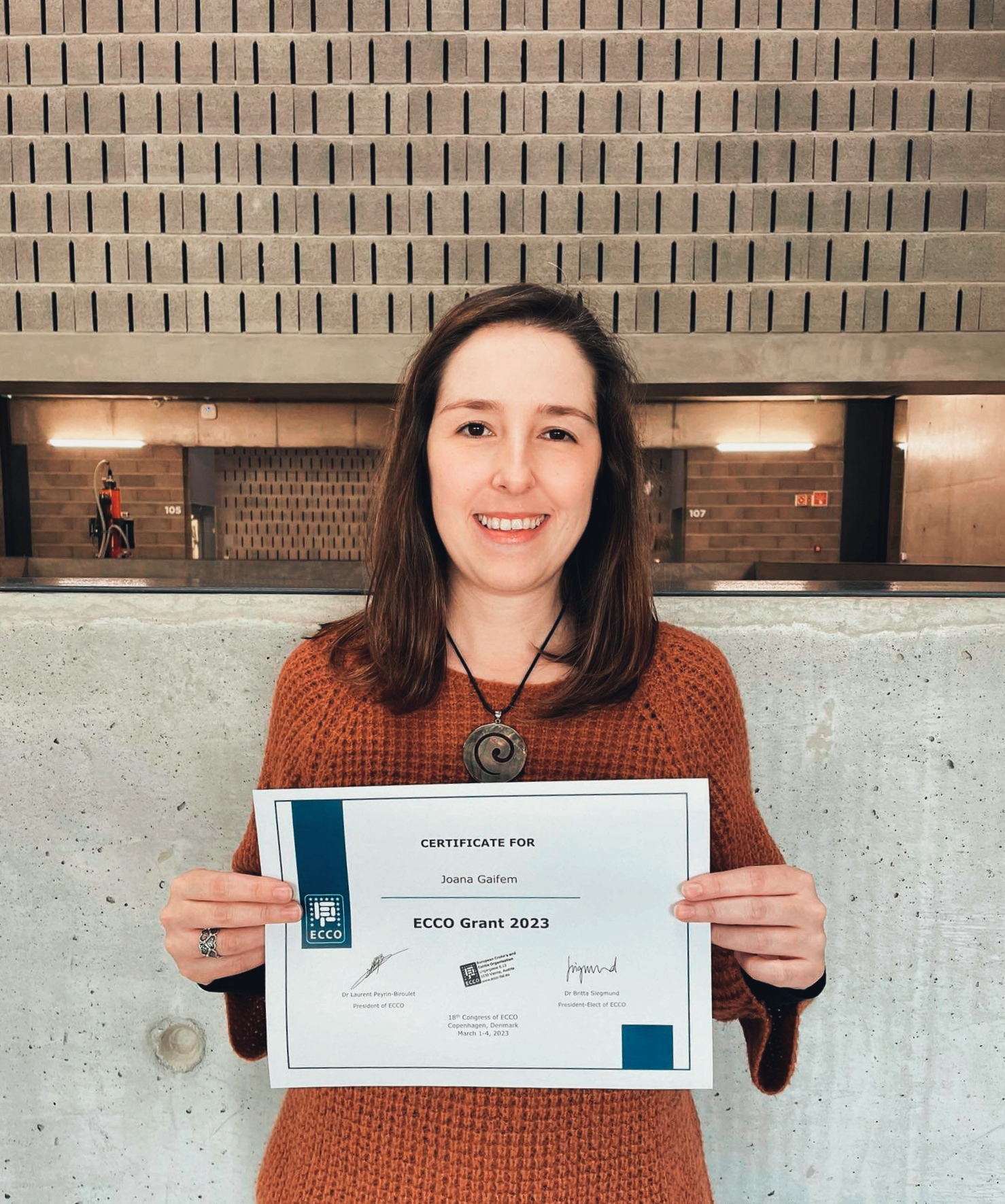ECCO Grant Study Synopsis: Joana Gaifem
Joana Gaifem, ECCO Grant Awardee
Feeding immunity: development of a novel glycan-based dietary strategy for IBD prevention
 Joana Gaifem © Joana Gaifem |
Background & aim of research
Dietary interventions have been shown to ameliorate symptoms in patients with mild or moderate IBD. Nevertheless, these therapies are only effective for a subset of patients, raising the need for novel dietary intervention strategies that aim to prevent IBD development. Glycosylation is a major post-translational mechanism characterised by the addition of carbohydrate structures, called glycans, to essentially all cells. We have revealed that mucosal T cells from Ulcerative Colitis patients exhibit alterations in mucosal glycosylation, which positively correlate with T cell hyperactivity and disease severity. We have also demonstrated that mice deficient in branched N-glycosylation display increased susceptibility to severe colitis. Supplementation of these mice with glycans resulted in disease control via inhibition of Th1/Th17 immune responses.
In this research we aim to explore whether dietary supplementation with glycans promotes a superior function for nutraceutical intervention to promote IBD prevention, characterising the effect of mucosal glycosylation reprogramming in shaping the intestinal environment.
Methodology/experiments that will be used
We will tackle these questions by combining state of the art technology applied to preclinical mouse models of IBD and ex vivo tissue/cell culture of colonic explants derived from a well- established cohort of IBD patients. We will also rely on molecular biology (16S rRNA sequencing), spectral flow cytometry and metabolomic approaches (liquid chromatography–mass spectrometry) to characterise the gut microbiota, immune response and metabolic profile upon glycosylation reprogramming.
Anticipated main impact
Given that IBD to date remains an incurable disease, one of the major challenges in IBD management is to avoid patient relapse and the development of complicated disease. It is anticipated that this project will reveal a novel, efficient glycan-based dietary approach that may be further explored in a prophylactic setting.
Proposed timeline
The project is expected to start in March 2023. The two tasks will occur simultaneously, and the project is expected to be completed within one year.